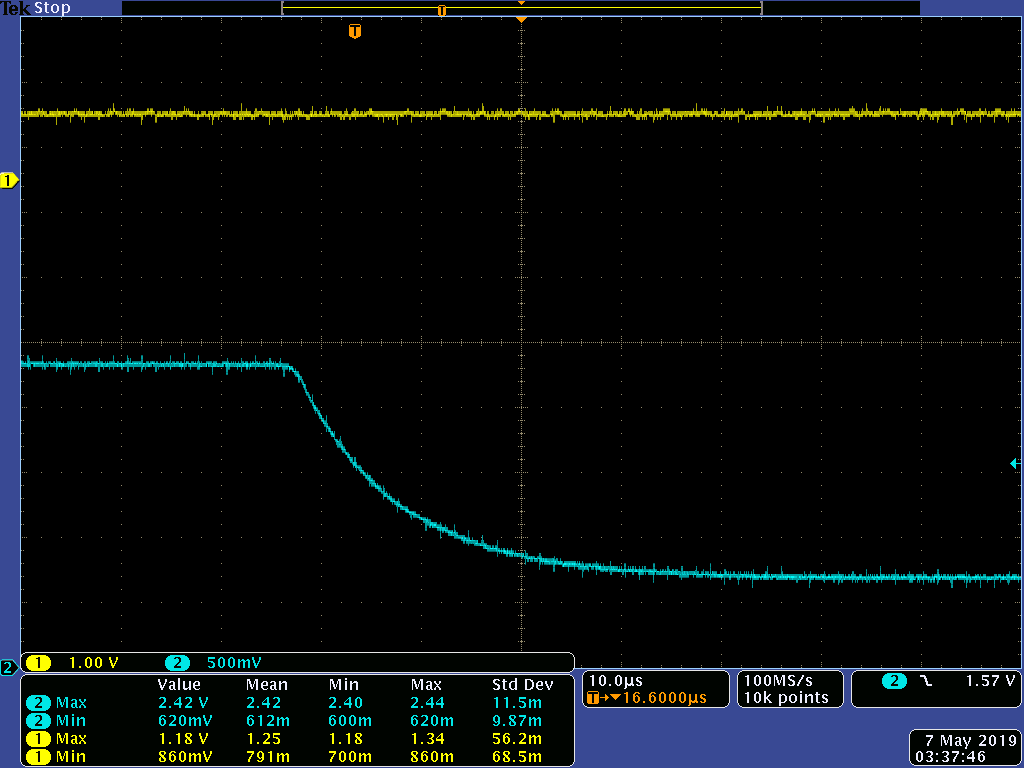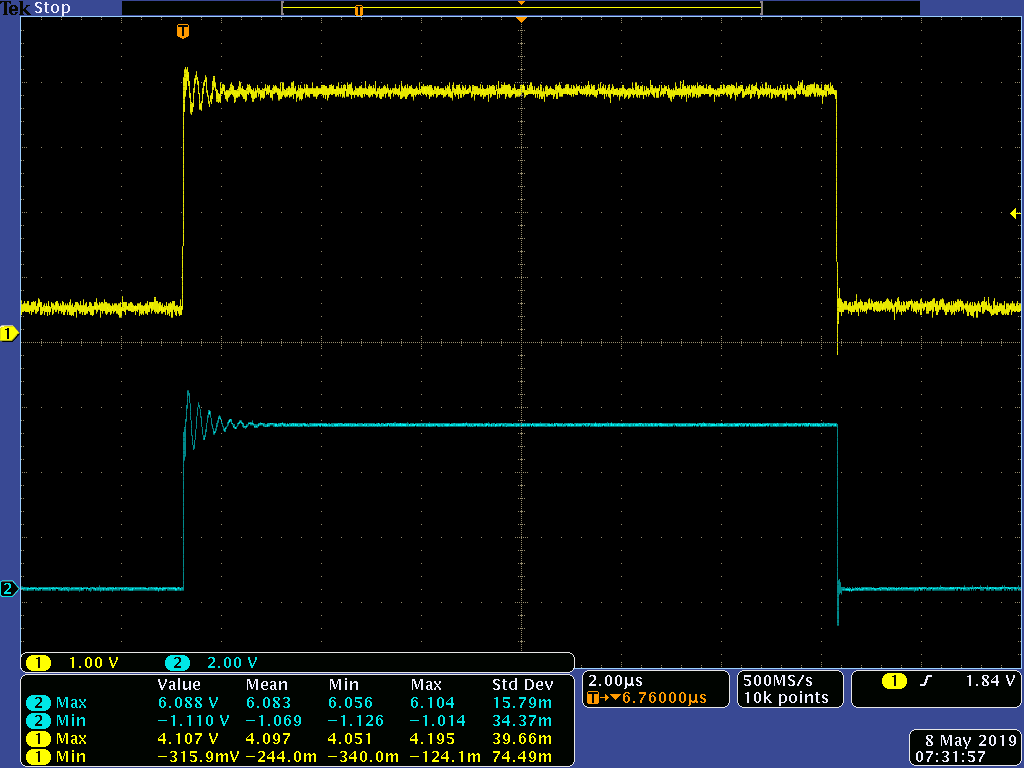Other Parts Discussed in Thread: ISO7810, STRIKE
Hi,
I'm currently having a problem using SN74LVC1G123 -- the output pulse isn't appearing. An image of it in my schematic can be seen below. I would like it to trigger on the falling edge of input A and output a pulse that is a little over 10 us long (I think the application curves place it at roughly 20 us, which is fine).
The "3.3 V" power supply is currently at a little under 3.6 V. The input, measured at TP5, is shown below on the yellow trace (sorry about the phone picture, didn't have a flash drive on me at the time). In both pictures below, the blue trace is the signal INSTR1, which is divided down by 1/4 (R2 has been changed to 301kOhm).
Based on the datasheet, I'm led to believe that this should work fine. The max of the input is 2.3 V (above 2 V), and the min is ~700 mV (below 800 mV). The output, measured at TP7, is shown below.
The output, for whatever reason, is at a DC ~1 V. Can anyone let me know if there's something I'm doing wrong? If more information from my end is needed, let me know and I would be happy to oblige.
Regards,
Michael



